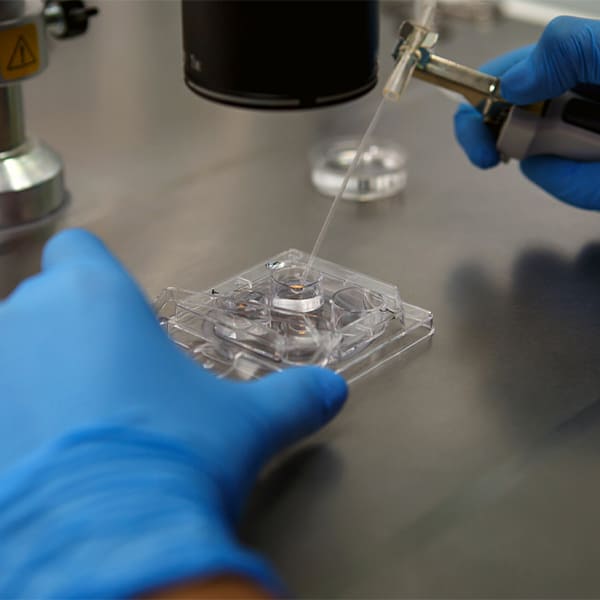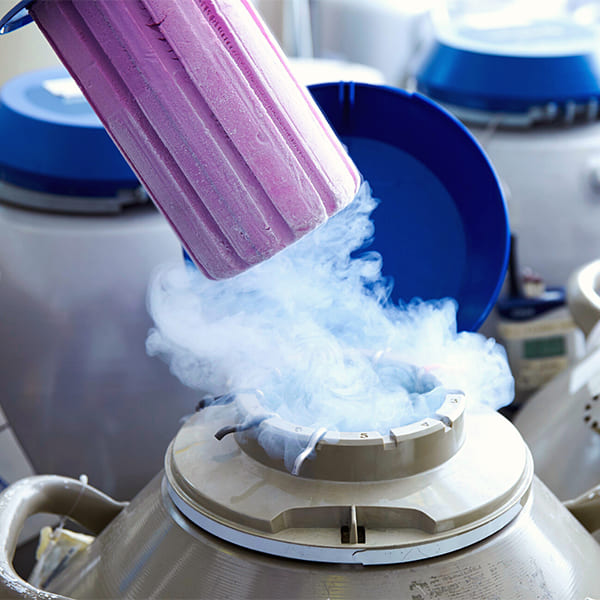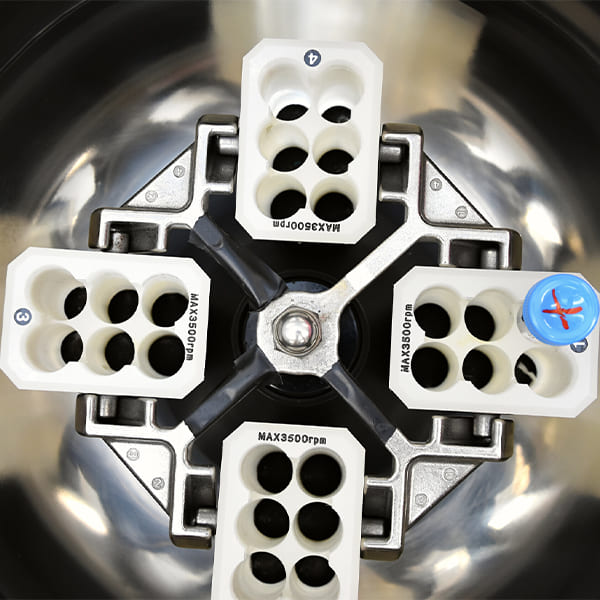- Home
- About Us
- Why BFI
- Treatments
Advanced IVF Treatment
Donor Services
Fertility Preservation
Advanced IVF Treatment
Donor Services
Fertility Preservation
- Locations
- Resources
- Contact Us
Laser-Assisted Hatching
When a chicken comes out of an egg, it has to break the out shell. This process is called hatching. Human embryos are protected throughout their journey in the genital tract – Fallopian tubes and uterus by an outer covering called zona pellucida. When an embryo has to implant, it has to break this outer shell, come out of it and establish direct contact with the endometrium. This is called embryo hatching. This is a very crucial stage in the process of implantation. An embryo that can successfully hatch only can successfully implant.
Embryo hatching is a very complex process triggered by the multiple signals between the embryo and the endometrium, also known as “Endometrium Embryo Cross talk”. The embryo has to use a lot of energy also to successfully complete the hatching process.
Sometimes the process of hatching fails. There is a higher risk in older age patients, frozen embryos etc.
The process of hatching can be assisted by various techniques called Assisted hatching. The most advanced, safe and accepted technique is to use a sophisticated and dedicated laser for cutting or thinning the zona pellucida is by laser, called a laser-assisted hatching LAH.
How is LAH done?
laser-assisted-hatching
Performed by our nation’s top embryologists, Laser-Assisted Hatching is precisely and safely done per international consensus and extensive experience.
- LAH is done on the day of embryo transfer.
- A very small hole is made in zona pellucida (outer covering of the embryos) with a dedicated FDA approved laser meant for LAH only.
- The AI-based sophisticated computer-guided process can be done with precision in microns.
- Minimum energy is used to avoid any possible side effects.
- The part of zona pellucida is selected, which is away from the genetic material/ embryo cells inside the embryo.
- The procedure is done in the IVF lab on the embryos to be transferred. Nothing is done on the lady her self – Lady does not have to suffer anything herself.
- The embryos are then transferred into the uterus as in the usual embryo transfer procedure in IVF.

Who can benefit from AH?

- Any patient undergoing IVF treatment can benefit from the advantages of AH and improve her chance of conceiving in that cycle.
- AH is specifically more helpful when zona pellucid is expected to be tough – thick
- Advanced age of female partner
- Expected zona thickening due to in-vitro culture
- Hyaluronidase exposed oocytes
- Frozen thawed embryos
- Thick zona pellucida
- When the previous IVF cycle has failed
- AH is required before taking a biopsy of a blastomere from the embryos for Preimplantation Genetic Testing – PGT
Advantages of LAH
- It provides a “mechanical advantage” to the embryos in breaking the zona for implantation.
- It also ensures early contact of embryos with the endometrium. This expedites enzymatic reaction between endometrium and embryos called “Embryo – endometrium cross talk”.
- Mechanical advantages and chemical advantage can give a better implantation rate and better pregnancy rate.

Disadvantages of LAH

- Requires expensive equipment dedicated for the purpose.
- Requires highly skilled and experienced technical staff
- Additional cost
- Uncommon chance of embryo damage or monozygotic twins
Advantage Bavishi
Bavishi Fertility Institute offers LAH to its patients with exclusive expertise and experience. We welcome our patients to avail of this proven modern technology and enjoy their improved success rates at a very little extra cost !!
